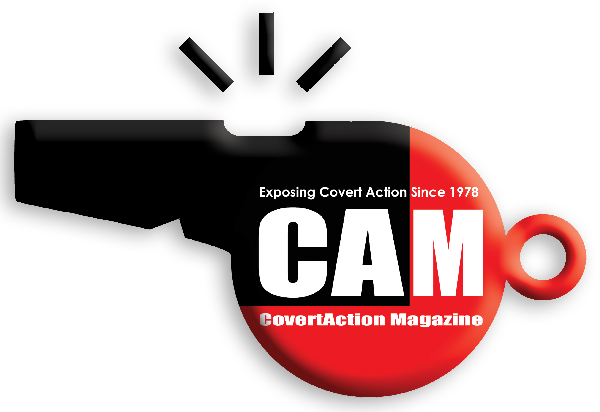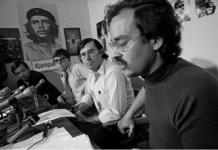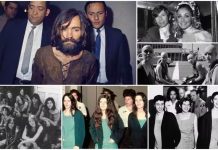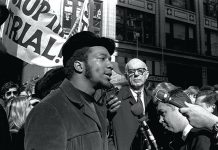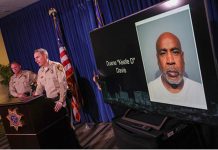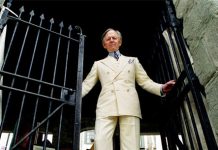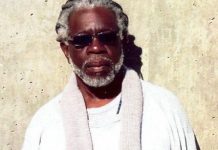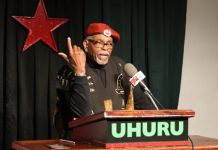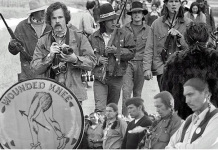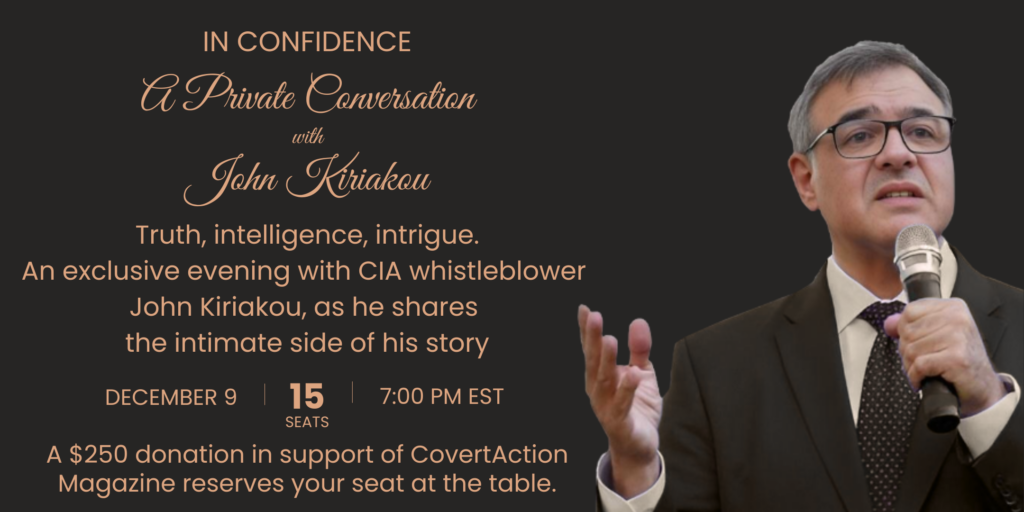
Saboteurs working for U.S. intelligence agencies created violent cult-like groups in the 1970s, such as the Symbionese Liberation Army (SLA), which helped marginalize the political left
[This article follows CovertAction Magazine’s efforts to inform younger generations on the sordid history of the CIA, FBI and other U.S. intelligence agencies.—Editors]
Today’s bleak political landscape, with two essentially right-wing parties and no effective political opposition, has its roots in the McCarthy-era and Cold War FBI counter-intelligence operations (COINTELPRO) whose purpose was to infiltrate and destroy the political left.
One of the tactics adopted under COINTELPRO was to infiltrate left-wing parties and groups—like the Socialist Workers Party (SWP), Black Panther Party, and Students for a Democratic Society (SDS)—in order to foment divisions within them and internecine conflict.
Agent provocateurs were planted who would adopt extremist positions and promote violent and counter-productive protest activities or initiatives that would alienate the public and destroy the credibility of legitimate protest movements.
Further, U.S. intelligence agencies created violent cult-like groups that adopted leftist rhetoric while carrying out criminal activities in order to further provide the state with a pretext to expand police powers.
Brad Schreiber’s book, Revolution’s End: The Patty Hearst Kidnapping, Mind Control, and the Secret History of Donald DeFreeze and the SLA offers important insights into the Symbionese Liberation Army (SLA), a radical California-based group in the 1970s which kidnapped Patty Hearst, heiress of the wealthy Hearst family, and went on a crime spree that helped to turn off the public from left-wing causes.
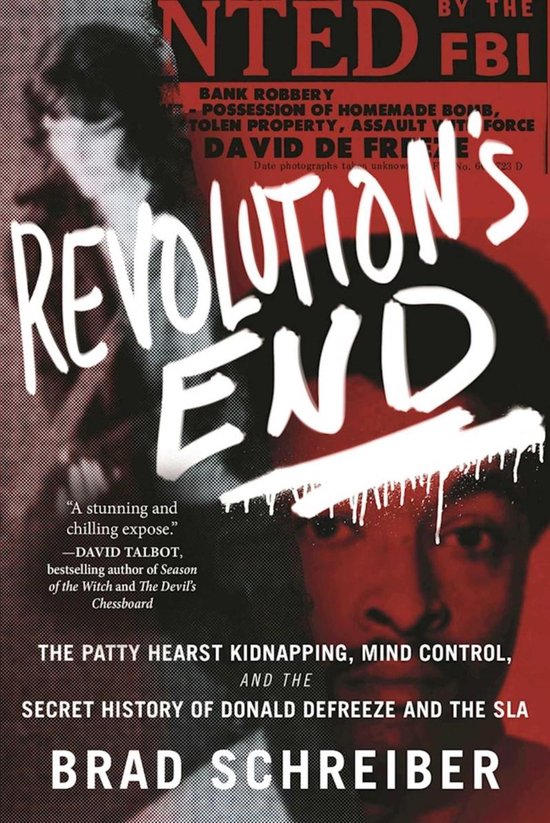
Schreiber shows that the founder of the SLA, Donald DeFreeze (aka Field Marshal Cinque[1]), was a government agent who had been subjected to behavior modification and programming under the CIA’s MK-ULTRA at the California medical facility at Vacaville in the 1970s.[2]
Receiving funds from the CIA’s Operation Chaos, an illegal domestic spying operation, and the Stanford Research Institute (which was CIA connected), Vacaville was a veritable “house of horrors.” Psychosurgeries, electroshock and lobotomies were performed and the CIA carried out medical experiments with drugs on inmates and placed them for periods in isolation.[3]
A petty criminal from Cleveland, Ohio, who had abandoned his wife and six children, DeFreeze was placed in Vacaville after having served as a Los Angeles Police Department (LAPD) informant. Recruited by LAPD “red squad” officer Ronald G. Farwell, DeFreeze’s job had been to sell guns to the Black Panthers in order to set them up for arrest and to fuel violence among different factions of the Panthers.[4]
While at Vacaville, DeFreeze was befriended by Colston Westbrook, an African-American linguist who oversaw the Black Cultural Association (BCA) at the prison, a cover for an experimental project to explore the extent to which unstable or susceptible prisoners could be controlled for the purpose of infiltration of Bay Area radical groups.[5]
Westbrook was officially named “outside guest coordinator” of the BCA and his cover was as a teaching assistant at the University of California at Berkeley’s Afro-American Studies Department specializing in Black linguistics.[6]
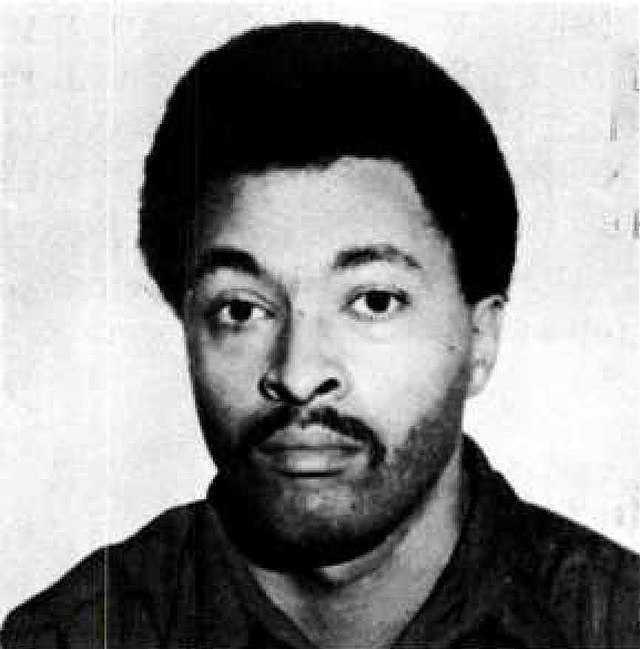
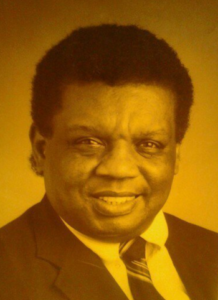
Prior to his work in the California prison system, Westbrook had been an adviser to the Korean CIA and worked in Vietnam during the war for Pacific Architects and Engineers (PA&E), a private contracting firm that provided cover for the CIA’s Phoenix Program.[7]
The latter was an intelligence operation by which the CIA identified “subversives” and worked with local intelligence agents to kidnap, arrest, torture and often kill them.[8]
The behavior modification programs at Vacaville were supported by California Governor Ronald Reagan and his Secretary of Health, Dr. Earl Brian, and counter-insurgency adviser William Herrmann, who were intent on destroying the 1960s-era protest movements and New Left and conceived of mind-control initiatives as a mechanism of social control.[9]
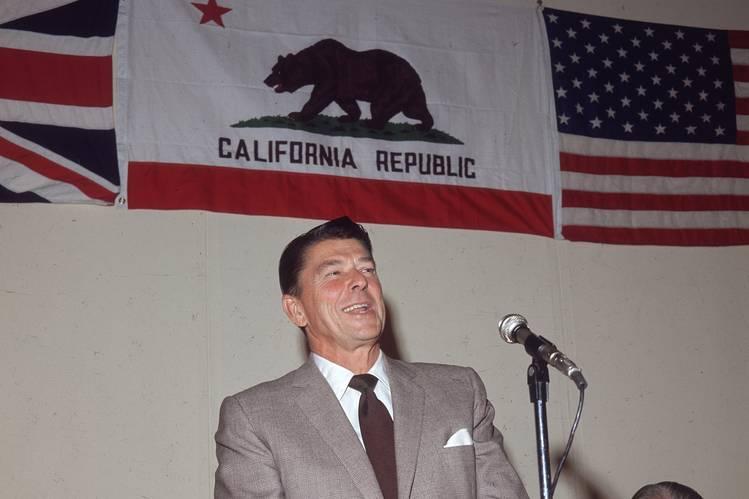
Both Brian and Herrmann, a psychological operations expert in Vietnam and Cambodia who crossed paths in Indochina with Westbrook and then enlisted him to work at Vacaville, had CIA connections.
Brian set up a company that stole sophisticated computer software from a private company, INSLAW, that was used by the CIA for surveillance and money-laundering purposes. He was also with Herrmann a key figure in the “October Surprise,” an illegal operation to subvert the hostage negotiations of the Carter administration to help Reagan get elected president in 1980.[10]
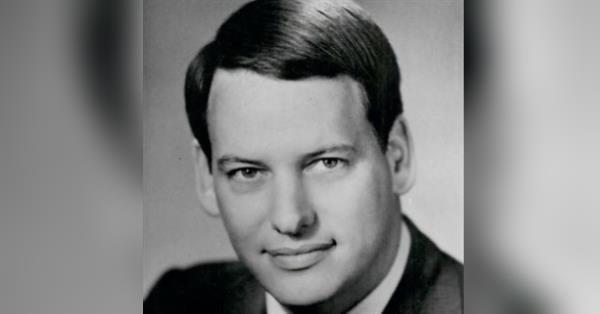
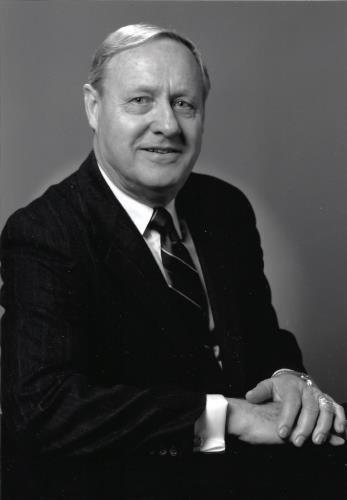
In return for his collaboration with Westbrook, DeFreeze received special privileges at Vacaville, including conjugal visits, even though he was not married.[11]
One of the women who visited him was Patty Hearst, whose grandfather, William Randolph Hearst, had been a media mogul known for promotion of yellow journalism in support of foreign wars.
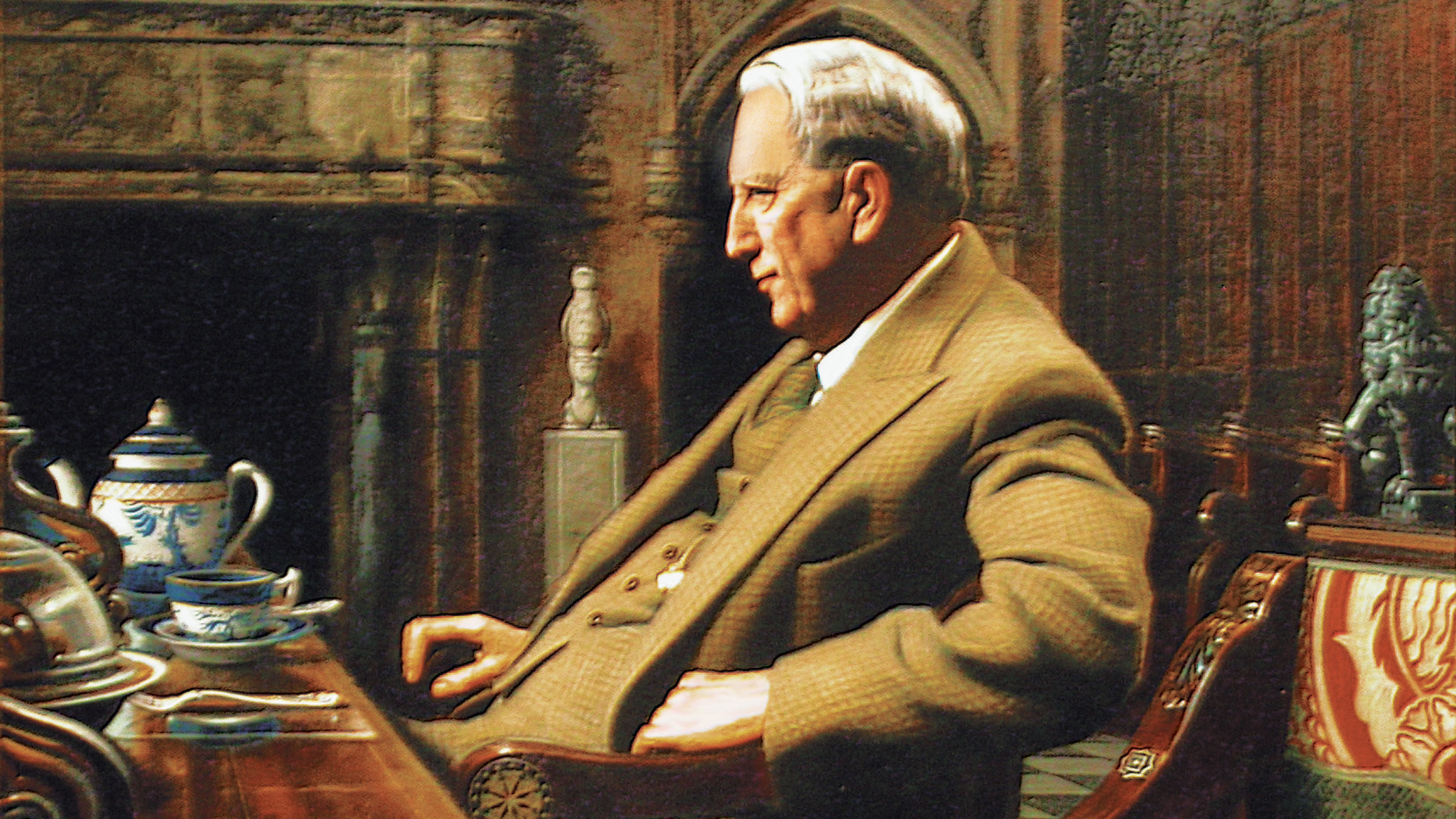
Officially, the BCA had existed to allow Black prisoners to air their frustration with sympathetic young whites, though the interchange with white leftists enabled Westbrook and his guinea pig, DeFreeze, to establish contacts with them with the secret intention of manipulating them and recruiting them into the SLA.[12]
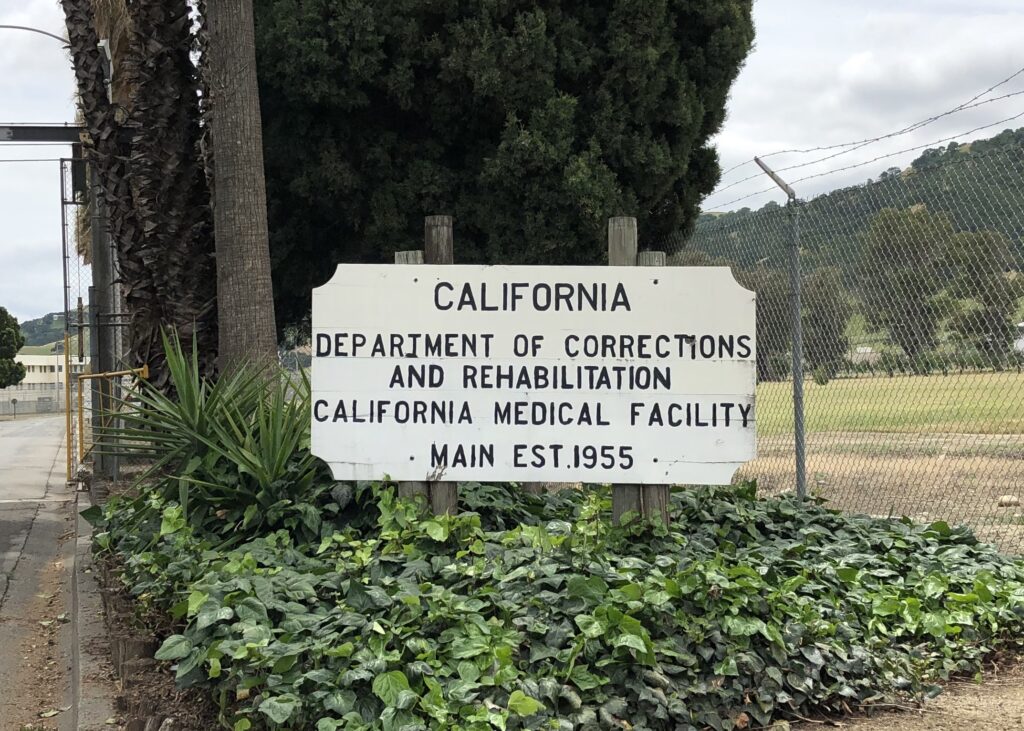
Many of the white leftists allowed in were Maoists and former members of the radical Venceremos organization, which supported the Cuban Revolution. Willie Wolfe, a founder of the SLA, became invested in the BCA while writing a term paper on it for an Afro-American Studies class at UC Berkeley that was taught by Westbrook.
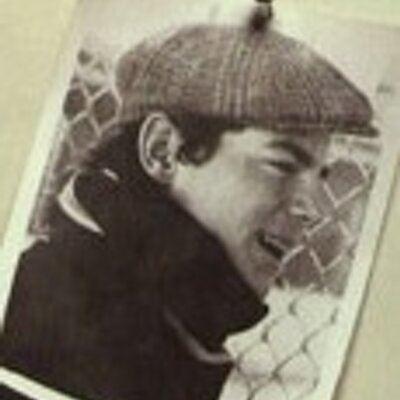
DeFreeze was never himself radical politically, but an opportunist who, in researcher Mae Brussell’s words, was “mechanized and roboticized by the CIA and other agencies.”[13]
DeFreeze told a fellow inmate of his plan for when he was released from prison, to “get a revolutionary group to kidnap some rich person…hold the person tied up in a dark place, keep him/her frightened and in fear for his/her life, then give him some mescaline and other drugs, and the person would become a robot and do anything he/she was asked to do—including killing others.”[14]
This is basically what he did with the SLA and Patty Hearst, though Hearst never killed anyone. Schreiber points out that the way DeFreeze treated Hearst was what he had learned from his experience at Vacaville. The approach was to use isolation, psychological threats, physical abuse, and alleged dosing of Hearst with hallucinogenic drugs to program and brainwash her.[15]
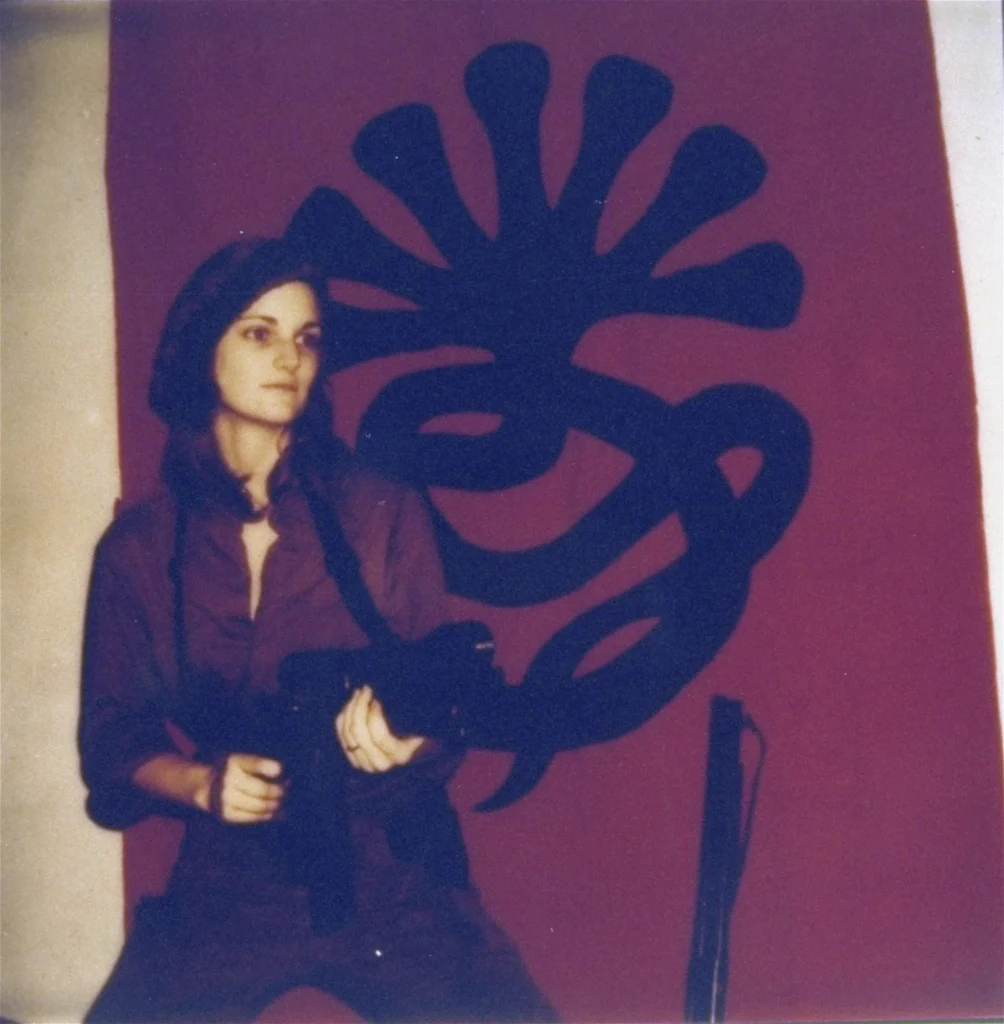
The SLA emerged at a time when the 1960s movements were on the wane because of the ending of the Vietnam War. The main student-based anti-war organization, Students for a Democratic Society (SDS), had already splintered after its name was appropriated by the violent Weather Underground faction.
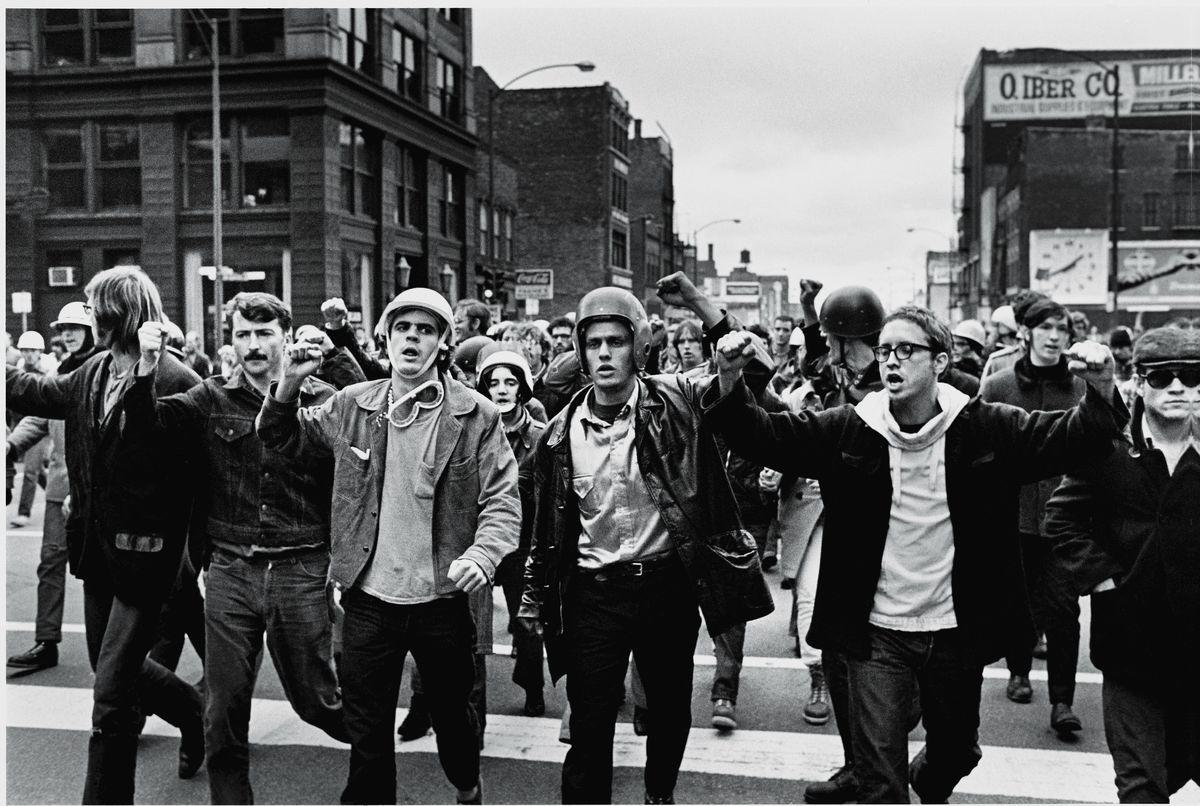
Many Bay Area leftists sensed that DeFreeze was a provocateur because he “came on too heavy,” according to Schreiber.[16]
The SLA never adopted any constructive programs for social change or tried to build a base among the masses. Instead they would rob local businesses they accused of supporting “fascist” governments like Portugal, South Africa, Chile and Israel, and disseminated radical literature and communiqués, which used slang like “pigs” [euphemism for cops].[17]
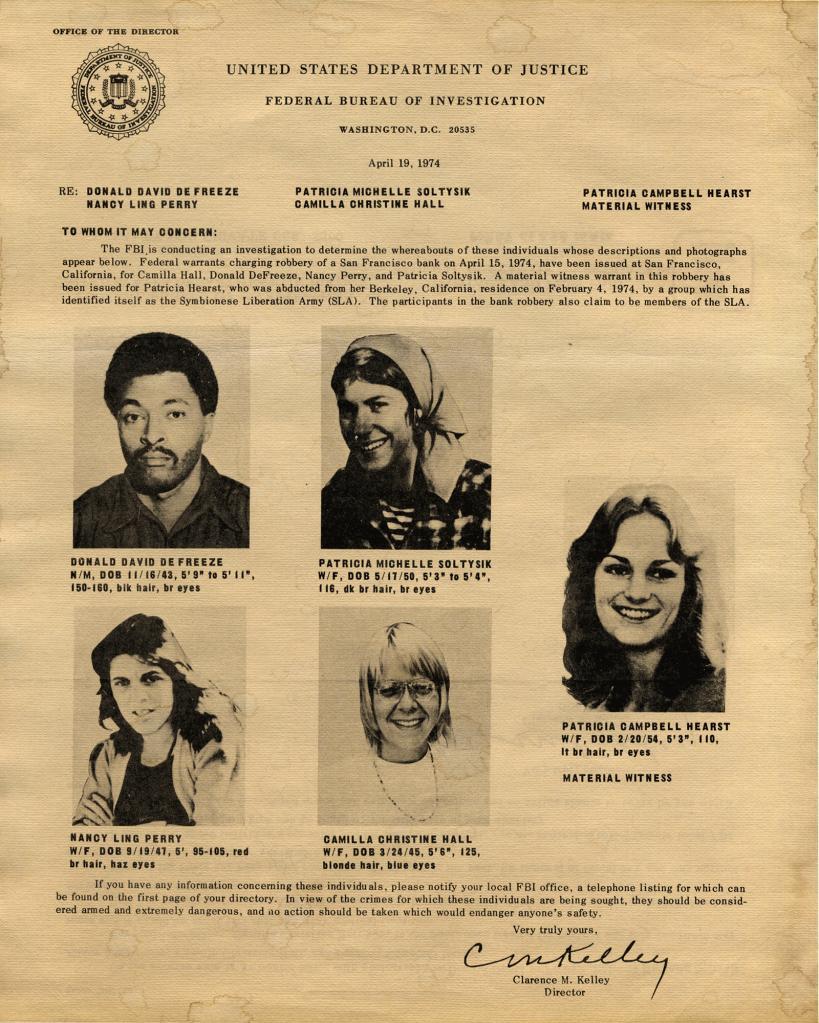
On November 6, 1973, SLA members assassinated Dr. Marcus Foster, the African-American superintendent of the Oakland Unified School District, and shot and badly wounded Robert Blackburn, his white deputy superintendent.[18]
In a communiqué, the SLA accused Dr. Foster of trying to create a political police force in Oakland schools, of compiling bio-dossiers through a youth identification program, and of building files for a computer database.
Schreiber says that these accusations were patently false and that Foster was a good man who had taken bold steps to improve the education of non-white children, not deprive them of their privacy or rights.
Backing away from an ID card program, he had responded to violence in the schools by working to try to integrate police, and the juvenile court system, and by hiring “peace officers” and “safety coordinators in select schools” in a plan that had wide community approval.[19]
The SLA’s Foster communiqué released after his killing included the false claim that Foster and Blackburn represented “the rich ruling class and big business and not the children and youth of our community.”[20]
According to Schreiber, Westbrook had fed misinformation to DeFreeze about Foster and convinced SLA members that Foster was intent on increasing police and surveillance powers over students and criminalizing Black youth.[21]
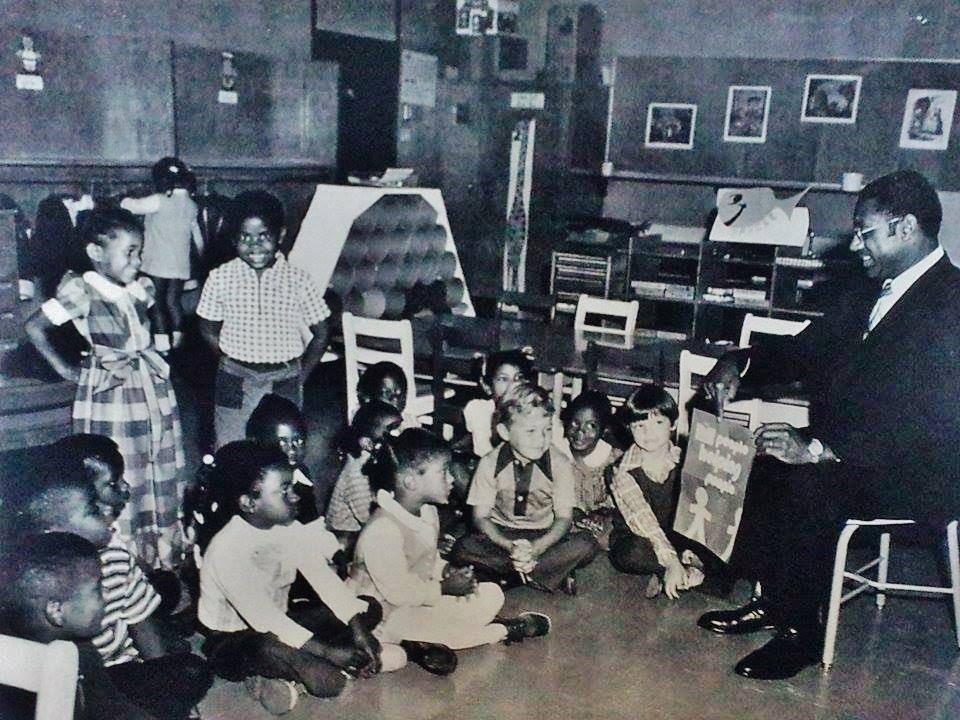
Westbrook was ultimately the mastermind of Foster’s brutal murder, whose intent was to discredit the Bay Area left by associating it with a heinous act.
The editors of the Bay Area countercultural Ramparts magazine put into print what many radicals were privately saying, namely “the act itself [Foster murder] was so brutal, so morally unjustifiable, and so politically incomprehensible that most Bay Area radicals assumed the SLA to be a cover for some right-wing or police group.”[22] Which indeed it was.
After Patty Hearst was kidnapped, the SLA got her father, William Randolph Hearst Jr.,[23] to donate several million dollars to help feed the poor in a publicity stunt that burnished the SLA’s reputation as a “Robin Hood.”[24]
Hearst was brainwashed into participating in a bank robbery at the Hibernia Bank in San Francisco and other criminal acts with SLA members, some of whom she claimed raped her while she was in captivity. During this latter period, Hearst took on the nom de guerre “Tania” after the nickname for Tamara Bunke, an Argentine-born East German revolutionary and Che Guevara’s lover, and boasted about being an “urban guerrilla.”
In 1976, Hearst was convicted in federal court on bank robbery charges and sentenced to 35 years in prison, though her sentence was commuted by Jimmy Carter, and she was pardoned by Bill Clinton.[25] Renowned psychiatrist Robert Jay Lifton pronounced Hearst a “classic case which met all the psychological criteria of a coerced prisoner of war.”

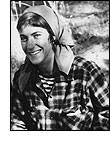
The SLA met its fiery end in May 1974 when, on live TV, the LAPD shot up a house where many of its members were holed up after SLA members Bill and Emily Harris were arrested for shoplifting.[26] Nancy Ling Perry, Patricia Soltysik and Camilla Hall were executed by gunshot wounds and Angela Atwood and Willie Wolfe died from smoke inhalation after the LAPD shot tear gas canisters and pyrotechnic grenades into the home and stopped the fire department from putting out the fire it had ignited.[27]
DeFreeze was said to have committed suicide by shooting himself in the head; however, an investigation that analyzed the ballistics found he was shot by someone outside the house.[28]
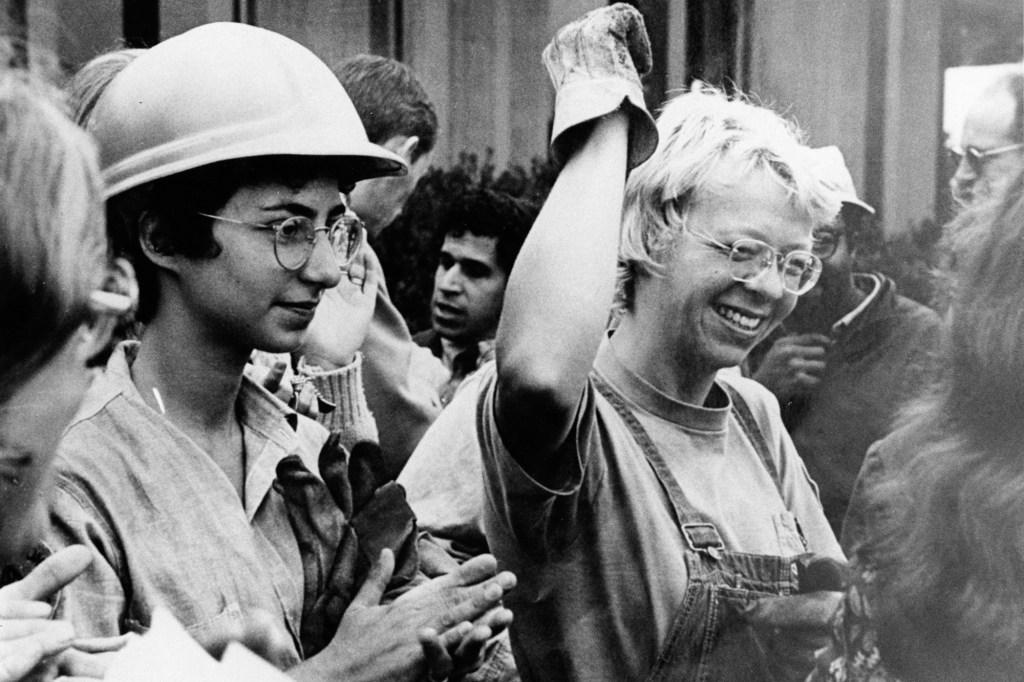
A report by a Las Vegas private investigator hired by Willie Wolfe’s father found the LAPD at fault for failing to try to negotiate the SLA’s surrender, and that the LAPD began firing into the home without provocation after a false rumor was spread that the SLA had killed an LAPD officer.
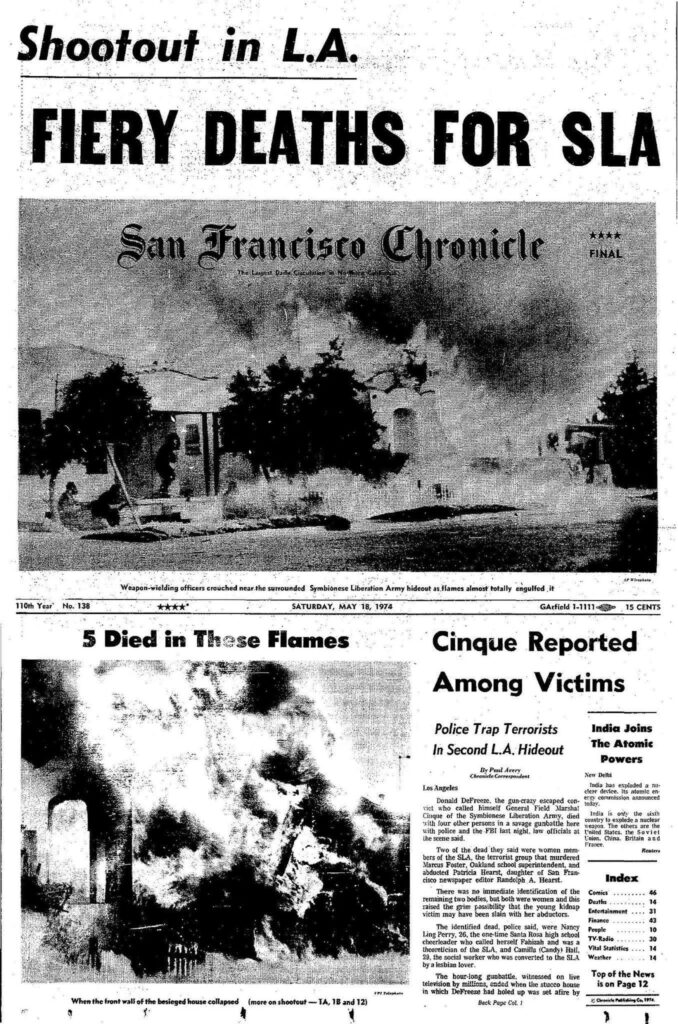
The LAPD fired more than 5,000 rounds of ammunition into the house when the SLA fired only a small fraction of that total at them.[29] Nancy Ling Perry was said to have been shot to death after she fired at police, though her body was found ten feet away from the back of the house shot in the back, with no weapon near her.[30]
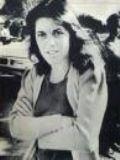
Despite the passing of a half century, the story of the SLA continues to intrigue the public and remains significant.[31]
Among other things, it helps illuminate the “strategy of tension” adopted by U.S. intelligence agencies, working on behalf of plutocratic elites, that helped to radically transform the U.S. political trajectory in the wake of the 1960s-era social movements.
Bruce Franklin, who was fired from his position as an English professor at Stanford University for involvement in political activism, was among those to identify the SLA as a “counter-revolutionary organization” likely created by agents provocateurs.
Franklin said in the late 1970s that the SLA did “a great deal of damage to the [1960s] revolutionary movement and played into the hands of the most reactionary forces in the United States today.”[32]
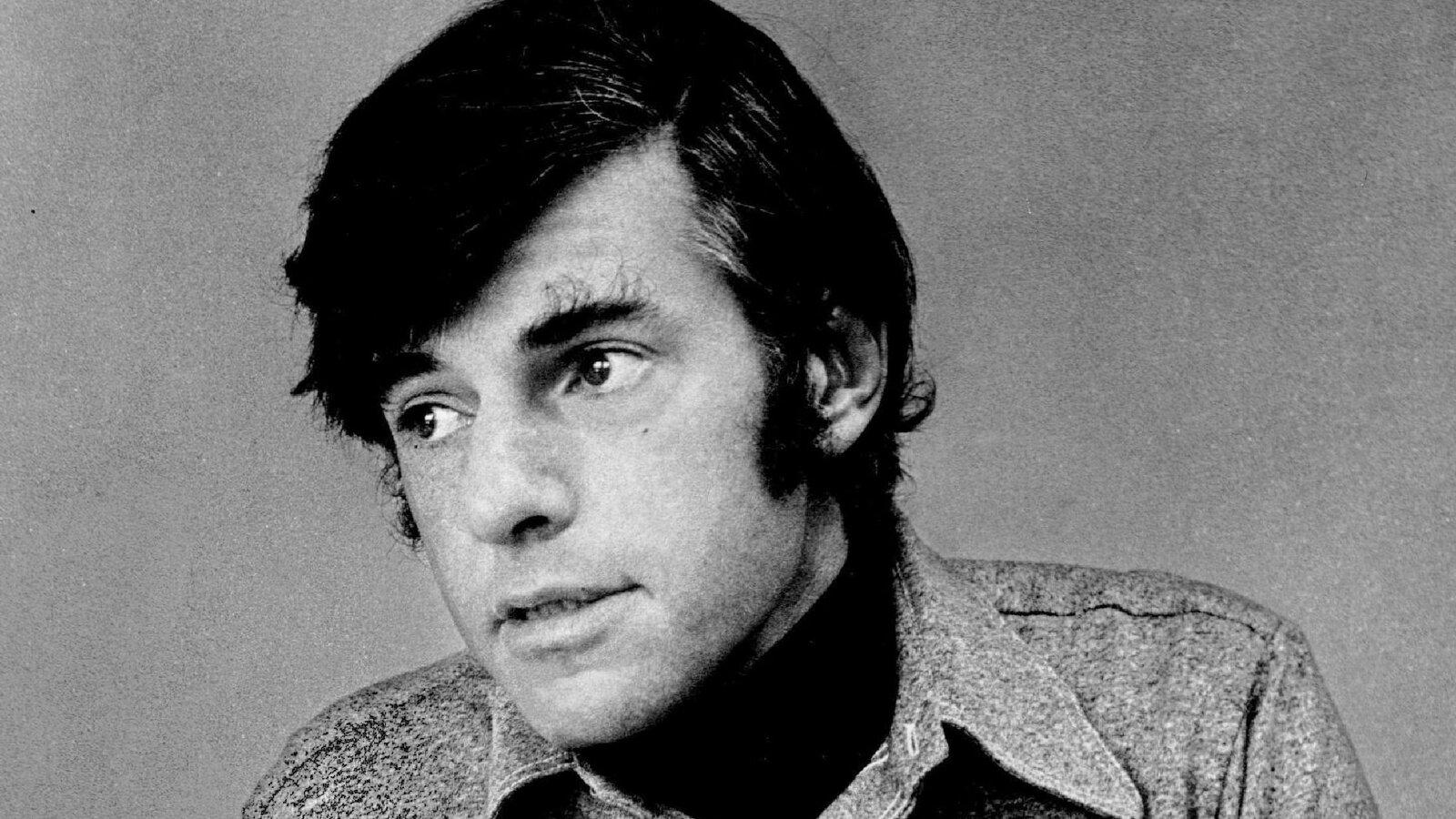
Almost 50 years later, Franklin’s comments resonate because the reactionary forces that were intent on destroying the 1960s New Left are firmly in power and control both major political parties.
To understand where we are today, it is important to study history and see the dark forces at work that continue to corrupt our body politick, using some of the same sinister methods as in the time of the SLA.
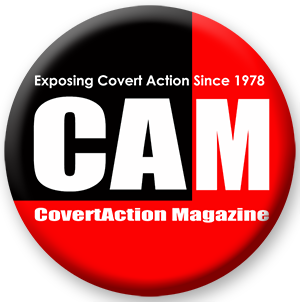
DeFreeze was given the name Cinque by Colston Westbrook. Joseph Cinqué was the Americanized name of a Mende chief who, in 1839, organized a slave revolt on the Spanish ship La Amistad. After a trial in New Haven that freed the captives, Cinqué actually returned to Africa and enslaved and traded members of his own race. According to researcher Mae Brussell, DeFreeze had a double named Bernard Keaton, which was indicative of him being an intelligence asset. ↑
The California medical facility at Vacaville was run by the California Department of Corrections. ↑
Brad Schreiber, Revolution’s End: The Patty Hearst Kidnapping, Mind Control, and the Secret History of Donald DeFreeze and the SLA (New York: Skyhorse Publishing 2016), 35, 36, 43, 46, 56. Prisoners reported being turned into zombies by the drugs administered at Vacaville under MK-ULTRA. Willie Wolfe wrote to his mother that “terrifying drug treatments” were used at Vacaville to “vegetable-ize those who are troublesome in their political fervor.” ↑
Schreiber, Revolution’s End, 14. DeFreeze worked with Ron Karenga, another police informant with the US Organization, a rival organization to the Black Panthers. Karenga’s job was to create a gang war between US and the Panthers. ↑
Schreiber, Revolution’s End, 42. ↑
Idem. Schreiber notes that Westbrook’s “encouragement of black prisoners to talk about their experiences and identities, coupled with his outsized personality, helped him initially gain the trust of many inmates at Vacaville.” According to Wikipedia, Westbrook pursued a Master’s and Ph.D. degree in linguistics and taught in the University of California at Berkeley’s Department of African American Studies. He later served as dean of students at Contra Costa College in San Pablo, California, from 1978 until 1989, and established his own educational consulting company, Minority Consultants, in Berkeley, which assisted African immigrants and African-Americans to educate mainstream society about how African-Americans learn, and to assist immigrants in adjusting to American society. ↑
Schreiber, Revolution’s End, 40. Westbrook also worked for the LAPD’s Criminal Conspiracy Section, which had CIA connections, and was an adviser to Cambodian leader Lon Nol, who came to power in a CIA-backed coup in 1970 and acquiesced to a massive U.S. bombing campaign that devastated Cambodia. PA&E built the interrogation-torture centers used in Phoenix known as Province Interrogation Centers (PICs). Westbrook’s job likely was to help run the PICs and work with South Vietnam’s police special branch under Phoenix. Additional aspects of Westbrook’s CIA career are detailed in Mae Brussell, “The SLA Is the CIA,” The Realist, February 1974. ↑
See Douglas Valentine, The Phoenix Program (New York: William Morrow, 1990). ↑
Schreiber, Revolution’s End, 38. ↑
Schreiber, Revolution’s End, 38. According to Schreiber, Herrmann was a counterintelligence expert for Systems Development Corporation, which designed, integrated and tested complex computer systems for military application. Herrmann additionally worked with the Stanford Research Institute, the RAND Corporation and the Hoover Center on Violence. California Attorney General, Evelle Younger, also had a background in military intelligence. ↑
According to Schreiber, DeFreeze also received the privilege of dealing marijuana for one of the officers at Vacaville. The split was: thirty percent for DeFreeze and seventy percent for the corrections officer. DeFreeze further had sexual relations in the prison with Patricia Soltysik (aka “Mizmoon”) and Nancy Ling Perry who became part of the SLA. Many white radicals in the New Left were sexually attracted to Black outlaws. Sexy women were also deliberately brought in by Westbrook to attract people to the BCA and SLA. ↑
Schreiber, Revolution’s End, 46. ↑
Mae Brussell, “The SLA Is the CIA,” The Realist, February 1974. Brussell wrote that DeFreeze was “a pathetic example of the way our society uses black males in its sadistic, imperialistic greed.” ↑
Schreiber, Revolution’s End, 36. Hearst appears to have been apolitical before being taken into captivity by the SLA. Her then fiancee Steve Weed told journalist Roger Rapoport that “once when they were together, Hearst had “brazenly stormed through a United Farm Workers picket line at a Safeway supermarket, calling the protesters ‘miserable … migrant people’ and a series of expletives.” At the time, Weed said, she had little interest in the women’s movement, and she regarded her father’s concern and support for impoverished Latinos living in San Francisco’s Mission District with a mixture of distrust, amusement and disdain. ↑
Schreiber, Revolution’s End, 42. ↑
Schreiber, Revolution’s End, 96. Tellingly, in March 1974, according to Mae Brussell, a prisoner in Soledad Prison was offered a chance to “escape” by three prison officials if he would “join the SLA army.” Brussell asks: “How did the police and prison personnel know where the SLA was? Why would they want to ‘help’ them recruit more troops—except to link the terrorists later on with prison escapees?” ↑
Schreiber, Revolution’s End, 100. At one point, Sarah Jane Moore, who had worked as an FBI informant, joined the SLA after working in the Hearst run breakfast program. Moore later tried to assassinate Gerald Ford in what some observers see as a “deep state” plot to install Nelson Rockefeller and/or George H.W. Bush as president. See Victor Thorn, New World Order Assassins (Washington, D.C. The American Free Press, 2011), 160. ↑
On January 10, 1974, SLA members Russell Little and Joseph Remiro, a Vietnam veteran, were arrested and then charged and convicted for Foster’s killing and given life sentences. Seven years later, on June 5, 1981, Little’s conviction was overturned by the California Courts of Appeal. He was later acquitted in a retrial in Monterey County. Remiro remains incarcerated; his eleven parole requests having been rejected. Little said later that Patricia Soltysik shot Foster, and Nancy Ling Perry shot Blackburn, aided by DeFreeze. ↑
Schreiber, Revolution’s End, 104. ↑
Schreiber, Revolution’s End, 106. ↑
Schreiber, Revolution’s End, 105. Westbrook had called Foster a fascist. Schreiber concluded that DeFreeze was ordered to kill Foster by Westbrook. ↑
Schreiber, Revolution’s End, 107. ↑
William Randolph Hearst Sr. was a famous media tycoon in the early 1900s who built the Hearst castle in San Luis Obispo, California. ↑
The Hearst kidnapping dominated TV and news media coverage for 18 months. ↑
Hearst claimed in her own memoirs that did what she had to do while in SLA captivity to survive. She went on to become a mother, grandmother, philanthropist, actress, novelist and kennel club competition winner. She was never again active in social justice struggles or politics. ↑
Mae Brussell pointed out that the Harrises and Angela Atwood had worked together as a “mod squad” narc team for the Indiana State Police intelligence division, raising questions if they were also agents provocateurs or undercover informants and as to whether the shoplifting arrest was a set-up to trigger the destruction of the SLA. Harris’s military ID, significantly, was found in the ashes of the burned house. Atwood and Emily Harris had been trained at the Indiana University School of International Affairs, which Brussell calls a “CIA think tank.” Brussell wrote that “Joseph Remiro and Nancy Ling Perry, important to the SLA for military tactics and cover-story rhetoric, were dependent upon drugs. Both were political conservatives with a ‘kill-a-commie-for-Christ’ background. Their transition into ‘radicals’ could have been assisted by the same chemical and psychological controls our intelligence agencies are using and experimenting with daily.” See Mae Brussell, “Why Was Patricia Hearst Kidnapped,” in The Essential Mae Brussell: Investigations of Fascism in America, ed. Alex Constantine, with introduction by Paul Krassner (Port Townsend, WA: Feral House, 2014). ↑
Schreiber, Revolution’s End, 173, 178. A TV station had footage of the LAPD stopping fire trucks that arrived at the scene. When a Fire Captain demanded to cross LAPD lines to fight the fire, the LAPD threatened him with arrest. A neighbor heard an LAPD officer shout to fire units over bullhorns: “Stop! Don’t come in here! Let it burn.” Nancy Ling Perry was executed while running from the burning house. Patty Hearst had called Willie Wolf “the gentlest, most beautiful man I’ve ever known.” ↑
Schreiber, Revolution’s End, 173. The bullet that killed DeFreeze was not from the .38 found under his dead body. It was a non-regulation steel-jacketed projectile of World War II type, which was not the kind normally used by the LAPD. Dr. Ronald Taylor, Director of the Forensic Science Laboratory at the LA Coroner’s Office, and Dr. Vincent Guitan, his scientific consultant who was a chemistry professor at UC Irvine, carried out the investigation and said that they learned most of their information from within the LAPD.
Schreiber, Revolution’s End, 173. ↑
Schreiber, Revolution’s End, 178. ↑
The story was kept alive in the 1980s when Hearst published her memoirs and Elia Kazan’s son, Nicholas, produced a Hollywood film Patty Hearst (1988), which failed of course to address how the CIA was behind the creation of the SLA. The Washington Post and other mainstream newspapers published articles on the 50th anniversary of Hearst’s kidnapping that also made no mention of the findings of Shreiber’s book. ↑
Schreiber, Revolution’s End, 156. ↑
CovertAction Magazine is made possible by subscriptions, orders and donations from readers like you.
Blow the Whistle on U.S. Imperialism
Click the whistle and donate
When you donate to CovertAction Magazine, you are supporting investigative journalism. Your contributions go directly to supporting the development, production, editing, and dissemination of the Magazine.
CovertAction Magazine does not receive corporate or government sponsorship. Yet, we hold a steadfast commitment to providing compensation for writers, editorial and technical support. Your support helps facilitate this compensation as well as increase the caliber of this work.
Please make a donation by clicking on the donate logo above and enter the amount and your credit or debit card information.
CovertAction Institute, Inc. (CAI) is a 501(c)(3) non-profit organization and your gift is tax-deductible for federal income purposes. CAI’s tax-exempt ID number is 87-2461683.
We sincerely thank you for your support.
Disclaimer: The contents of this article are the sole responsibility of the author(s). CovertAction Institute, Inc. (CAI), including its Board of Directors (BD), Editorial Board (EB), Advisory Board (AB), staff, volunteers and its projects (including CovertAction Magazine) are not responsible for any inaccurate or incorrect statement in this article. This article also does not necessarily represent the views the BD, the EB, the AB, staff, volunteers, or any members of its projects.
Differing viewpoints: CAM publishes articles with differing viewpoints in an effort to nurture vibrant debate and thoughtful critical analysis. Feel free to comment on the articles in the comment section and/or send your letters to the Editors, which we will publish in the Letters column.
Copyrighted Material: This web site may contain copyrighted material the use of which has not always been specifically authorized by the copyright owner. As a not-for-profit charitable organization incorporated in the State of New York, we are making such material available in an effort to advance the understanding of humanity’s problems and hopefully to help find solutions for those problems. We believe this constitutes a ‘fair use’ of any such copyrighted material as provided for in section 107 of the US Copyright Law. You can read more about ‘fair use’ and US Copyright Law at the Legal Information Institute of Cornell Law School.
Republishing: CovertAction Magazine (CAM) grants permission to cross-post CAM articles on not-for-profit community internet sites as long as the source is acknowledged together with a hyperlink to the original CovertAction Magazine article. Also, kindly let us know at info@CovertActionMagazine.com. For publication of CAM articles in print or other forms including commercial internet sites, contact: info@CovertActionMagazine.com.
By using this site, you agree to these terms above.
About the Author

Jeremy Kuzmarov holds a Ph.D. in American history from Brandeis University and has taught at numerous colleges across the United States. He is regularly sought out as an expert on U.S. history and politics for radio and TV programs and co-hosts a radio show on New York Public Radio and on Progressive Radio News Network called “Uncontrolled Opposition.”
He is Managing Editor of CovertAction Magazine and is the author of six books on U.S. foreign policy, including Obama’s Unending Wars (Clarity Press, 2019), The Russians Are Coming, Again, with John Marciano (Monthly Review Press, 2018), Warmonger. How Clinton’s Malign Foreign Policy Launched the U.S. Trajectory From Bush II to Biden (Clarity Press, 2023); and with Dan Kovalik, Syria: Anatomy of Regime Change (Baraka Books, 2025).
Besides these books, Kuzmarov has published hundreds of articles and contributed to numerous edited volumes, including one in the prestigious Oxford History of Counterinsurgency .
He can be reached at jkuzmarov2@gmail.com and found on substack here.
